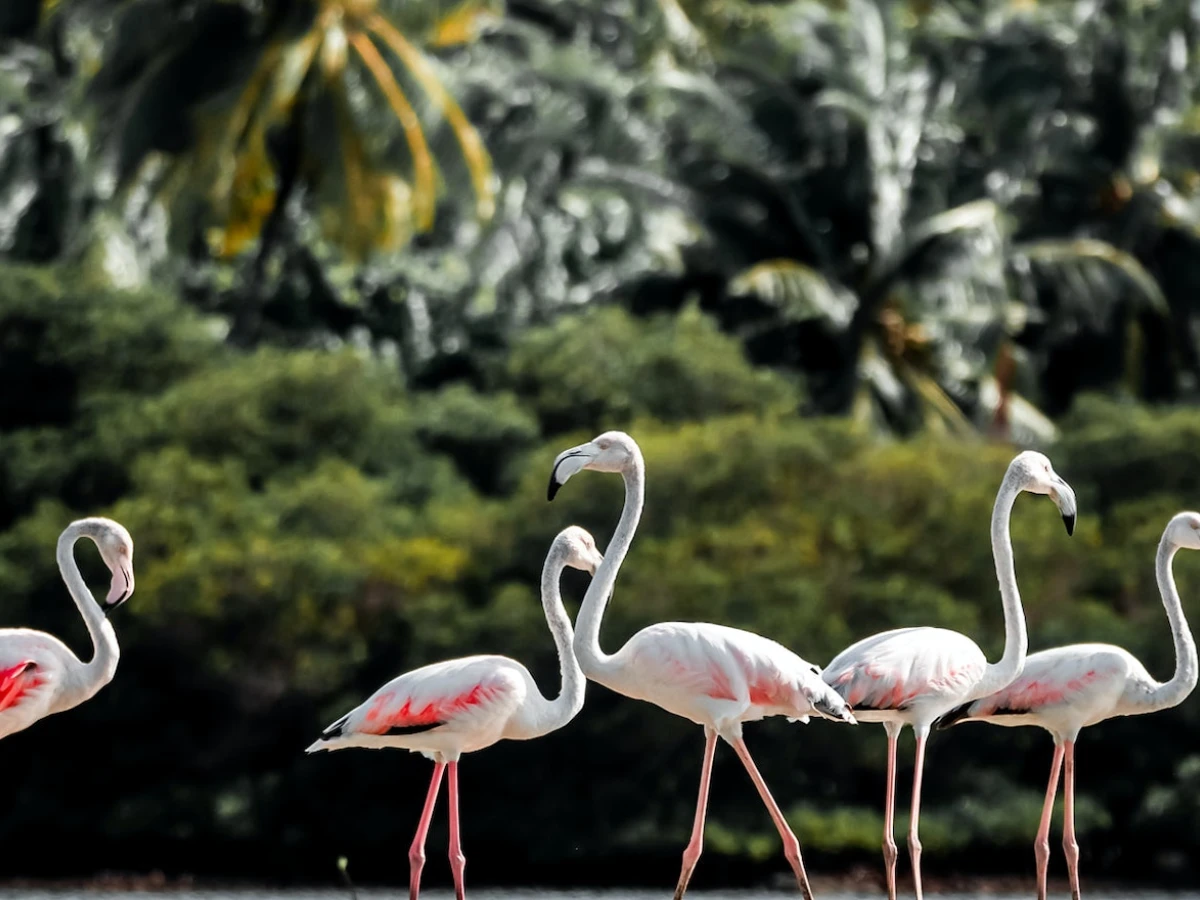
Migrating flamingos in Maldives may not leave
Sighted first in the upper north islands, these flamingos alighted on several islands before they finally perched in H.Dh.Kulhudhuffushi.
By
Aminath Shifleen
Maldives has been a favoured destination of flamingos, locally known as Gudugudaa Dhooni, for a long time. Director General of the Environment Protection Agency (EPA) Ibrahim Naeem said that the birds had previously stopped in the Maldives no longer than a week during migration.
The flamingo birds that arrived in the Maldives have been here for almost a year now. Some of the birds discovered in last October are still in some wetlands in the north of the Maldives. Researchers expect the flamingos to stay for good now, and make Maldives their home.
"What happened in the past is that the birds were getting captured and abused. Therefore, it had not stayed here for a long time," Naeem said.
Naeem went on to explain that flamingos are now safe in these wetlands. The natural habitat of these 'Greater Flamingo' species that live in India and Africa is not very different to the wetlands they have migrated to in Maldives. Naeem said that if we don't abuse the birds, and if they can sustain themselves with fish from these regions, the flamingos will stay in the Maldives indefinitely.
"We have surmised that the birds are not likely to leave the Maldives now," he said.
Not native to the Maldives, the flamingos were first sighted in the upper north of the country, in HA. Filladhoo. The next day, a flamingo was captured, de-winged and put up for sale for MVR 30,000 in another island. EPA has imposed a huge fine on the capture of this protected species.
Since then, these birds have received added protection.
Kulhudhuffushi to Funadhoo marsh; a heartwarming vista
Sighted first in the upper north islands, these flamingos alighted on several islands before they finally perched in HDh. Kulhudhuffushi. At the time, there were about 15 birds in the area and most of them were flaminglets. While some of the birds stayed in Kulhudhuffushi, the others flew away.
The birds were later reported to have been sighted in wetlands across the country, but the birds that stayed in Kulhudhuffushi and Funadhoo have not left their new habitats.
"At first three birds landed. Then two more birds alighted later," said a Kulhudhuffushi resident.
"But these birds never leave the mangrove marshside for too long. They fly away but return."
Funadhoo reports the same thing. The birds that arrived on the island in October are now living in the wetland known as ‘Dhahfalhu’. They sometimes fly off to two uninhabited islands nearby. Both of these uninhabited islands have marshs and the birds sustain their diet from there.
A Funadhoo photographer, Jawad Mohamed said that some of the flamingos in Kulhudhuffushi also fly to Funadhoo.
"There are currently five birds in Funadhoo marsh. When we contact Kulhudhuffushi, they report that two birds are missing from there. So we expect the flamingos are flying back and forth between the two islands," Jawad said.
The flaminglets seen in Kulhudhuffushi and Funadhoo have now grown. Jawad said that the birds are now bigger than the local herons (Maakanaa). Pink twinged on their long legs and under feathers, these beautiful flamingos make a memorable picture.
The flamingos in Funadhoo have been there almost a year, and have become the pride of islanders now. However, some people who go bidr-seeing step too close to them and it has become a growing concern.
"There are some people who go near the birds in canoes because they cannot see the birds from afar across the vast marsh. Therefore, the flamingos get disturbed from the close proximity and fly off to the marsh on the next island," Jawad said.
Experts say that Africa is the true habitat for these birds, who migrate to escape winter. Changes in the migratory paths of several species aren't an amusing quirk of nature; they are a sign of catastrophic climate change. Many species of migratory birds have been sighted in the Maldives.
Naeem believes that the birds have been staying in the Maldives for so long because they have adapted to the marshland habitats here and also because they no longer face human danger.
Related
Related

EPA warns of violations threatening Maldives' protected species

Turtle poachers in Baa atoll fined MVR 198,000 each

ERA probes complaints of illegal sand mining in Malé atoll lagoon

